Browse Teaching
Explore commonly taught topics along with related primary sources, discussion questions, teaching strategies, and annotated bibliographies.
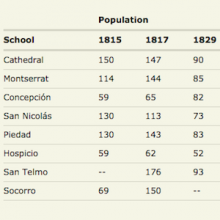
Long Teaching Module: Parents, Children, and Political Authority in 19th century Argentina
Between 1810 and 1860, Argentina emerged as a deeply divided nation. One of the main problems that remained unresolved throughout the 19th century was how power would be shared between Buenos Aires, the capital, and the rest of the provinces. Juan Manuel de Rosas, who ruled the country between 1829 and 1852, provided some semblance of order.
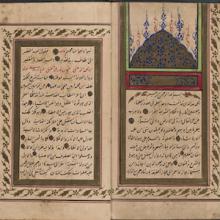
Long Teaching Module: Education in the Middle East, 1200-2010
In recent years, westerners have been fascinated by the education of children in the Middle East, raising concern over whether or not schools teach extreme radicalism or anti-Americanism. The Arabic word madrasa, which literally means "school," has come to imply in the minds of some pundits and politicians a pro-terrorism center with political or religious affiliation.
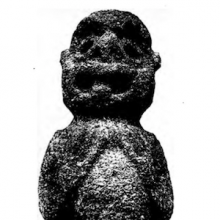
Long Teaching Module: New Zealand Childhoods (18th–20th c.)
This teaching module explores how colonization shaped the nature of childhood in New Zealand both among indigenous populations and those of European descent.

Short Teaching Module: Children and Daguerreotypes (19th c.)
For historians, there are several ongoing debates about the periodization of childhood and its transformation over time. When did children become important and in what capacity? As economic contributors? As the focus of emotional attachment or as subjects prone sentimental idealization? As political symbols or pawns?
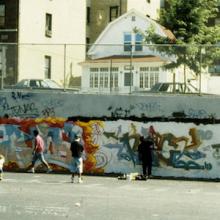
Short Teaching Module: Graffiti, Gender, and Youth (20th c.)
I use "graffiti art" – the unmediated writings, paintings, and drawings that began to appear in public spaces in New York, Philadelphia, and elsewhere on the east coast during late 1960s – in order to examine the: status of young people as valid historical actors and "citizens" relative to adults; changing access of young people to shared public spaces; gendering practices within youth cultures
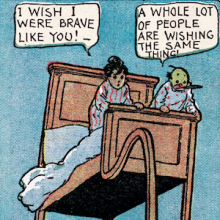
Short Teaching Module: Winsor McCay's Little Nemo in Slumberland
A young, tousled-haired boy about the age of seven is slumbering away in his bed, ensconced in a non-descript, middle class bedroom (fig. 1). He is jarred awake by the revelation that his bed is levitating, and slowly floating out his window and into space.
Short Teaching Module: Children and Disability (19th, 20th c.)
In studying the historical meaning of disability in the U.S., official reports of the myriad institutions established for the care, education, training, and sometimes merely confinement, of persons whose differences set them apart have been a key source of information.
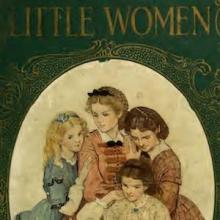
Short Teaching Module: Girlhood and Little Women
Scholars often label the period between 1865 and 1920 the "Golden Age" of Anglo-American children's literature, as this is the period when many of the classics were written and published, including Alice in Wonderland (1865), Ragged Dick (1868), Tom Sawyer (1876), Treasure Island (1884), Rebecca of Sunnybrook Farm (1903), The Secret Garden (1911) to name just a few.

Short Teaching Module: Codex Mendoza (16th c.)
In Mexico City, towards the middle of the 16th century, Nahuatl-speaking painters created the Codex Mendoza, one of the most lavish indigenous accounts of history and moral behavior known today. Across pages of expensive, imported paper, the painters of the C.
Short Teaching Module: Children and Human Rights (20th c.)
On April 18, 2008, Pope Benedict XVI told the United Nations General Assembly, "The promotion of human rights remains the most effective strategy for eliminating inequalities between countries and social groups, and for increasing security".
Short Teaching Module: Rules of the Thälmann Pioneers (20th c.)
National and state level world history curricula include study of 20th-century political and economic regimes, namely communism and capitalism. As students learn about these political ideologies and economic systems, they often embrace black and white thinking.
Short Teaching Module: Jewish Children & the Holocaust
Originally published in Polish by the Jewish Historical Commission in Cracow in 1946 and republished in English in 1996 by the British publisher Vallentine Mitchell, The Children Accuse is required reading about the early postwar testimonies of Jewish children in Poland. 1 The book consists of 55 children's testimonies and 15 adult testimonies.
Short Teaching Module: Russian Youth and Masculinity (19th c.)
Autobiographical writing as a rich source for the exploration of European childhood and youth is self evident; in many cases, it is one of the most nuanced ways to understand historical actors' earliest experiences. 1 Such is the case in Russia, where there emerged a new genre of writing on childhood and youth in the middle of the 19th century.
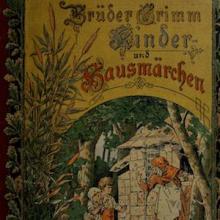
Short Teaching Module: Grimms' Children's and Household Tales
Folktales and fairy tales are excellent resources for dealing with historical topics related to children and youth. In the first place, the genres themselves are often associated with children and childhood, especially since editors, writers, and pedagogues in 19th-century Europe began presenting folktales and fairy tales as tools to be utilized in the moral and cultural education of children.
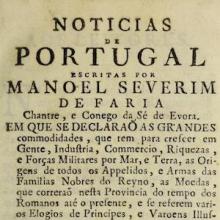
Short Teaching Module: Orphans and Colonialism (17th c.)
The story of colonialism in the early modern era is generally told as one of adults—and primarily adult men—exploring, conquering, and transporting goods and ideas. Historians of women have made it increasingly clear that women are also important actors in this story, but children and adolescents have received little attention.
Short Teaching Module: Letter by the Bratislava Five
This teaching module addresses a protest in Bratislava during the summer of 1989 aimed at commemorating the anniversary of the Warsaw Pact invasion by publicly laying flowers at various locations in Slovakia where citizens had been killed in 1968. The primary sources referenced in this module can be viewed in the Primary Sources folder below.
Short Teaching Module: Czech Independence Day Speech
The dramatic changes in Eastern Europe happened so rapidly and over so broad an area that making these events understandable for students can be a challenge. This teaching module uses a landmark speech by Vaclav Havel as a means to unpack the rapid events of 1989. The primary sources referenced in this module can be viewed in the Primary Sources folder below.
Short Teaching Module: Children and Witchcraft (16th c.)
The overall details of the rise and decline of this cultural focus on witches are generally accepted. Beginning as early as the late 1400's (and almost everywhere in the Atlantic world by the early 1500's), early modern Europeans sought, discovered, and condemned their own neighbors for maleficia (using magic to cause harm) as well as participating in a Satanic community.
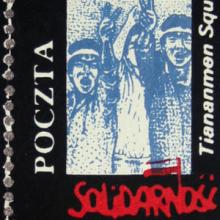
Short Teaching Module: Remembering Tiananmen Square
Although China is located quite far from Eastern Europe, dissidents in Eastern Europe identified with the struggles by opposition leaders in China and used images of the 1989 Tiananmen Square uprising to reinforce memories of resistance in Eastern Europe. The primary sources referenced in this module can be viewed in the Primary Sources folder below.
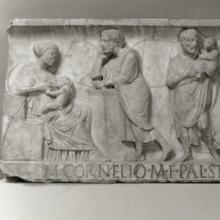
Short Teaching Module: Roman Children’s Sarcophagi
I use images of two Roman marble sarcophagi for topics on children and childhood in undergraduate courses on ancient society, family, gender, representations, and historiography. The sarcophagi can be used to study one period of antiquity or to examine changing notions of childhood over time.